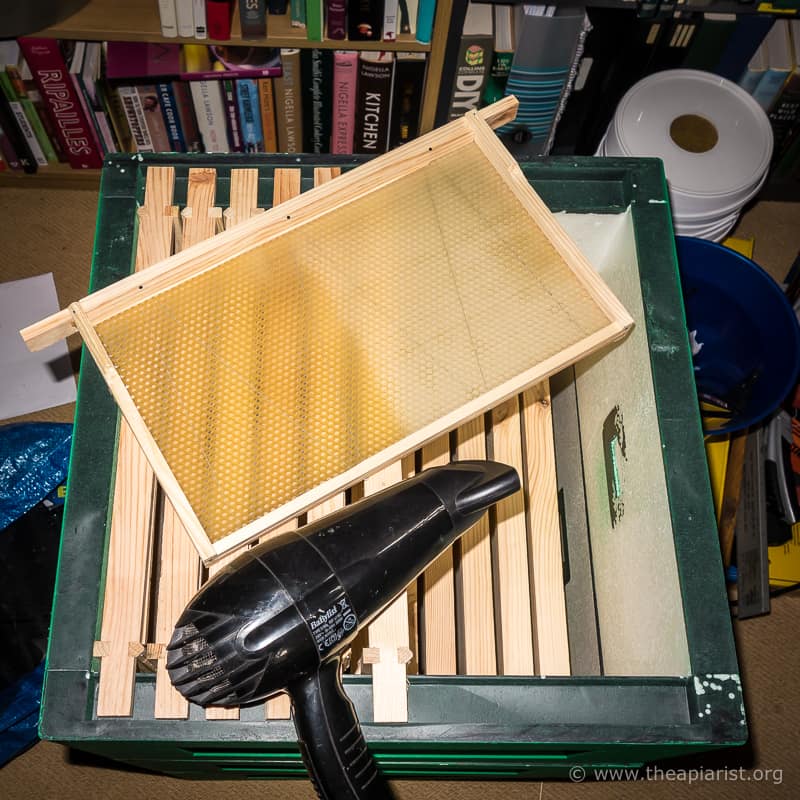The hairdryer treatment
I must be missing a couple of fingers. When I wrote the last post on hive and queen numbering I counted off the days to the end of this week, scheduled the post and was then quite surprised when it appeared on Wednesday.
D’oh!

That Friday feeling
That’s spoilt the pattern a bit.
To get back on schedule here’s a note about the well-known trick to revitalise foundation {{1}}.
Frames and foundation
It’s the time of the season when many beekeepers will be running out of frames as they try and keep up with splits and swarming.
It’s sometimes difficult to get new foundation precisely when you need it. The suppliers sell out or delivery takes a week and you need it that afternoon {{2}}. I therefore usually buy in bulk and store it somewhere cool and flat.
If you look after it properly foundation lasts for ages. Don’t go piling things on top of the stack and try not to damage the fragile edges. However, over time it becomes brittle and develops a pale waxy bloom on the surface. It also loses that lovely ‘new foundation’ smell.
The bees draw out this old rather tired foundation appreciably less well than they do new fragrant sheets. In my experience this is particularly noticeable in supers.
However, a few seconds with a hairdryer on a medium setting quickly restores the foundation to its original state.
Don’t overheat it. The sheet will bow slightly as it is warmed. Treat both sides to try and keep it as flat as possible. The foundation will become slightly translucent and regains that lovely ‘new foundation’ smell as oils are released from the warmed wax.
It’s easier to do this once the foundation is fitted in the frame. However, old, brittle foundation is less easy to work with when you’re making up frames in the first place.
Or you could use foundationless frames 😉
Your call.
Colophon
The phrase ‘hairdryer treatment’ is most often associated with the last but one, two, three, four {{3}} managers of Manchester United FC, Sir Alex Ferguson. The BBC’s Learning English website describes it very well … When Sir Alex Ferguson was angry with his players, he shouted at them with such force, it was like having a hairdryer switched on in their faces.
Since I’m interested in etymology {{4}} and not football I’ve no idea what prompted the rise in use of the term in May 2013, visualised below on Google Trends.

Hairdryer treatment – Google Trends
Perhaps the May 2013 peak wasn’t Fergie or football at all … perhaps it was a flurry of articles on restoring old wax foundation 😉
{{1}}: By posting it now I can refer back to it in the future.
{{2}}: Or, more usually yesterday afternoon.
{{3}}: Fifth if Ole Gunnar Solskjær doesn’t survive failing to get into the Champion’s League.
{{4}}: And entomology.

Join the discussion ...